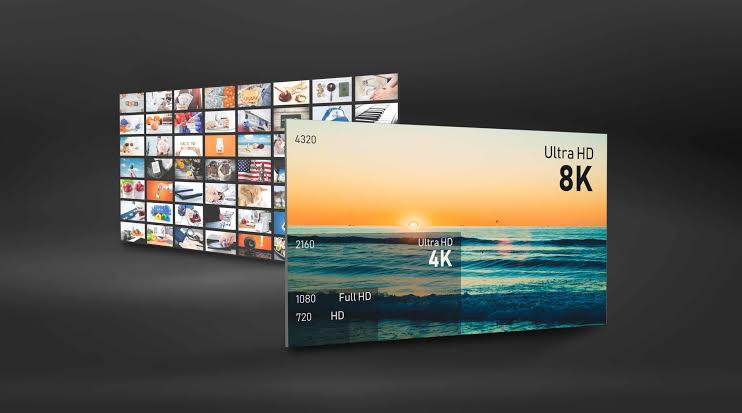
In today’s digital era, high-quality visual content has become a crucial element for businesses and individuals alike. Whether it’s for marketing purposes, entertainment, or educational content, the demand for visually appealing and immersive experiences is on the rise. Two technologies that have significantly contributed to enhancing visual content are LED (Light Emitting Diode) and UHD (Ultra High Definition).
This article will explore the role of LED vs UHD in achieving high-quality visual content and highlight their differences.
Benefits of LED in Visual Content
- Energy Efficiency: LED displays consume significantly less power compared to traditional displays, making them more environmentally friendly and cost-effective.
- Brightness and Contrast: LEDs provide high brightness levels and superior contrast ratios, resulting in vibrant and eye-catching visual content.
- Flexibility: LED panels can be easily customized and arranged in various shapes and sizes, allowing for creative and unique display setups.
- Durability: LED displays are durable and resistant to external factors such as vibrations, shocks, and temperature fluctuations, ensuring reliable performance in various environments.
- Dynamic Content: LED technology enables dynamic content display, such as scrolling text, animations, and interactive elements, enhancing user engagement.
Introduction to UHD
Ultra High Definition (UHD), also known as 4K resolution, refers to a display standard with a significantly higher pixel density than standard high-definition displays. UHD provides a more detailed and lifelike visual experience by delivering four times the resolution of Full HD displays.
Enhancing Visual Quality with UHD
- Greater Detail: UHD displays offer sharper and more detailed visuals due to their higher pixel count, resulting in enhanced clarity and realism.
- Improved Color Accuracy: UHD technology supports wider color gamuts, allowing for more accurate and vibrant color reproduction.
- Immersive Experience: The increased resolution of UHD displays creates a more immersive viewing experience, making viewers feel like they are part of the content.
- Future-Proof Investment: As UHD content becomes more prevalent, having UHD displays ensures compatibility with the latest visual media and avoids the need for immediate upgrades.
LED vs. UHD: A Comparison
While LED and UHD are different technologies, they are often used together to create high-quality visual content. Here are some key differences between the two:
- LED is a display technology that provides enhanced brightness, flexibility, and dynamic content capabilities, while UHD refers to the resolution of the display.
- LED technology is not limited to a specific resolution and can be used with various display standards, including UHD.
- UHD is compatible with different display technologies, including LED, LCD, and OLED.
How LED and UHD Work Together
LED and UHD technologies complement each other to deliver exceptional visual experiences. LED displays serve as the foundation, providing brightness, contrast, and dynamic content capabilities. UHD resolution enhances the visual quality by offering greater detail, color accuracy, and immersion. When combined, LED and UHD create a powerful synergy that captivates the audience and elevates the overall visual content.
Importance of High-Quality Visual Content
High-quality visual content plays a pivotal role in several aspects:
- Marketing and Advertising: Visually appealing content attracts attention, increases brand awareness, and improves customer engagement.
- Entertainment and Media: Movies, TV shows, and video games rely on high-quality visuals to create immersive experiences and captivate audiences.
- Education and Training: Visual content enhances the learning process by making complex concepts more accessible and engaging.
- Virtual Reality and Augmented Reality: These emerging technologies heavily rely on high-quality visuals to create realistic and immersive virtual worlds.
Impact of LED and UHD on Different Industries
- Retail: LED displays and UHD visuals help retailers create captivating in-store experiences, promote products effectively, and drive sales.
- Hospitality: Hotels, restaurants, and event venues utilize LED and UHD technologies to provide visually stunning environments and engage guests.
- Sports and Entertainment: LED screens and UHD displays are used in stadiums and arenas to deliver live action and replays in stunning detail.
- Digital Signage: LED displays with UHD content are widely used in advertising and information displays, grabbing attention and conveying messages effectively.
Future Trends and Innovations
The evolution of LED and UHD technologies continues to push the boundaries of visual content. Here are some future trends and innovations to watch out for:
- MicroLED Displays: MicroLED technology offers even higher brightness, contrast, and pixel density, paving the way for ultra-thin, seamless displays.
- HDR (High Dynamic Range): HDR enhances the color and contrast range of visuals, resulting in more lifelike and vibrant content.
- 8K and Beyond: As technology progresses, higher resolutions such as 8K and beyond will become more common, offering unprecedented levels of detail.
- Interactive and Touch-Enabled Displays: The integration of touch and interactive capabilities with LED and UHD displays will enable new forms of user interaction and engagement.
Conclusion
LED and UHD technologies have revolutionized the creation and consumption of high-quality visual content. LED displays provide brightness, flexibility, and dynamic content capabilities, while UHD resolution delivers greater detail, color accuracy, and immersion. By leveraging the strengths of LED and UHD, businesses and content creators can captivate audiences, enhance brand experiences, and stay at the forefront of visual innovation.
Follow our socials Whatsapp, Facebook, Instagram, Twitter, and Google News.








